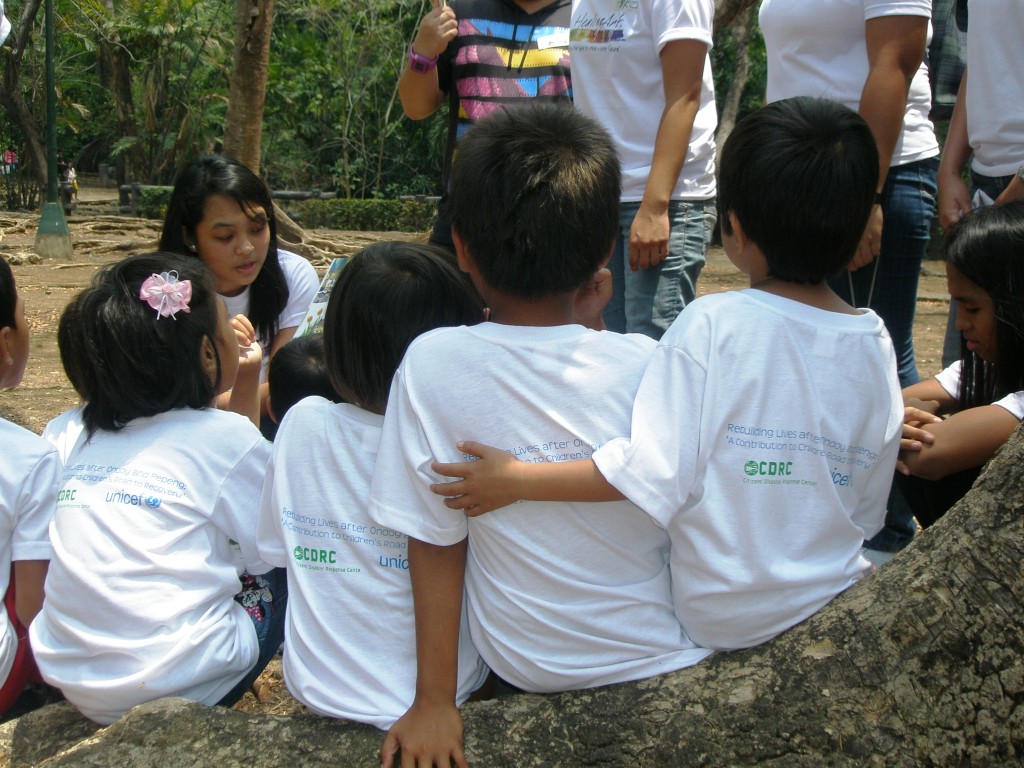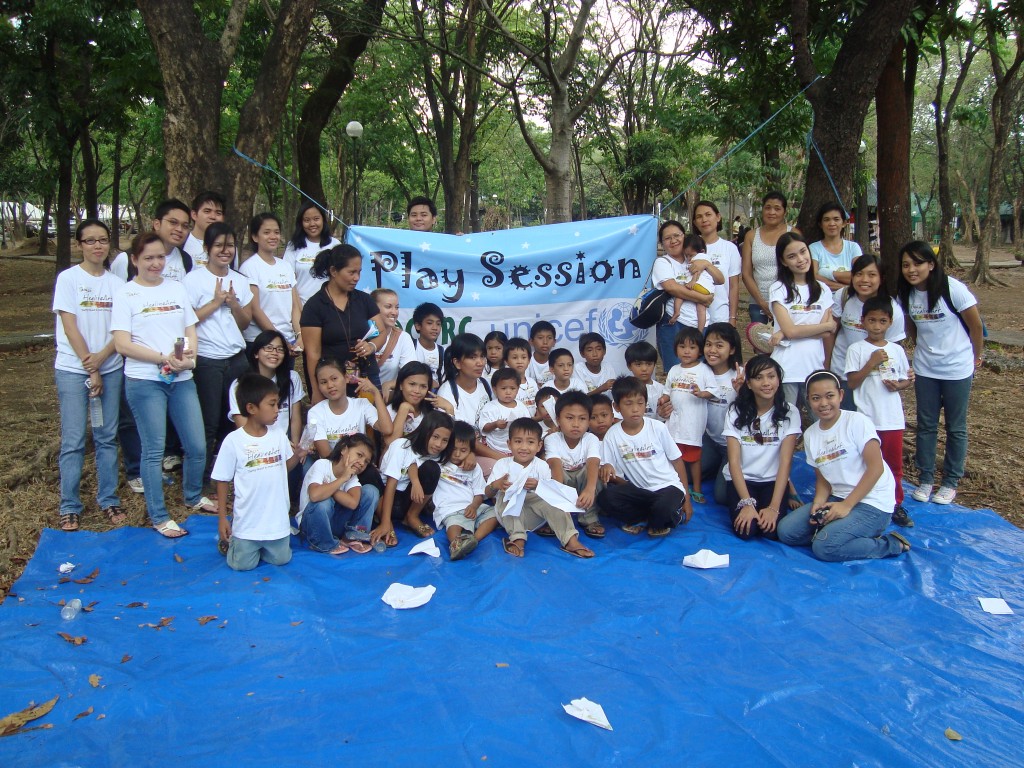At CDRC we are working towards promoting the importance of child protection during and after disasters. We’ve partnered with UNICEF in order to deliver a project working in 10 communities affected by Ondoy and Pepeng. The project is titled, “Rebuilding Lives after Ondoy and Pepeng: A Contribution Towards Children’s Road to Recovery”. The project incorporates Salinlahi Alliance for Children’s Concerns’ design for psychosocial and art therapy activities for victims of disasters. This approach allows children to comfortably open up and share their disaster experiences in order to contribute to their healing process. There is also a disaster management orientation (DMO) component relevant for children that equip them with the knowledge-based disaster safety.
My experience assisting with the psychosocial activities thus far has allowed me to draw some observations on the importance of children and their unique healing processes.
During the unfortunate event of a disaster, children are seldom high on the recovery priority list. The truth is, children who have endured conflict, population displacement or natural disasters are among the most vulnerable sectors of society and require a lot of special attention. The assumption that during disasters children are to be the responsibility of the parents is flawed. What happens to those children who get separated from their parents or worse yet their parents do not survive such an event?
At the time of a disaster, children can be seen as forgotten souls. While adults are busy assisting with rescue and relief missions, children are often pushed aside and told to do what is asked of them and not to ask questions. This form of neglect can cause children to suppress their emotions which can push them to run away from caregivers out of fear. Once separated from their families, children can become exposed to risks, such as: recruitment into armed groups, exploitation, sexual abuse or trafficking. These dangers surrounding disasters don’t pass with the storm, but linger long after the climatic event is over.
In order to protect and preserve the youthfulness of children, it’s necessary to address their specific needs as vulnerable victims of disasters. An adult who experiences a traumatic event processes it very differently than children. Typical coping strategies for adults, such as counseling and therapy sessions are less effective in dealing with children’s needs. Therefore, it’s important to encourage children-based coping strategies to avoid bottling up of emotions or suppressing memories. The goal is to foster an environment that promotes sharing their experiences with fellow survivors, and ultimately facing their fears in a safe place .
During disasters children lose more than just material belongings, they lose their sense of security. Undergoing the project activities serves a very valuable purpose in helping children regain that sense of security. It’s truly inspiring to be a part of their healing process; which can be heard through their laughter, seen through their drawings, and felt through their hugs of thanks.



Leave a Reply